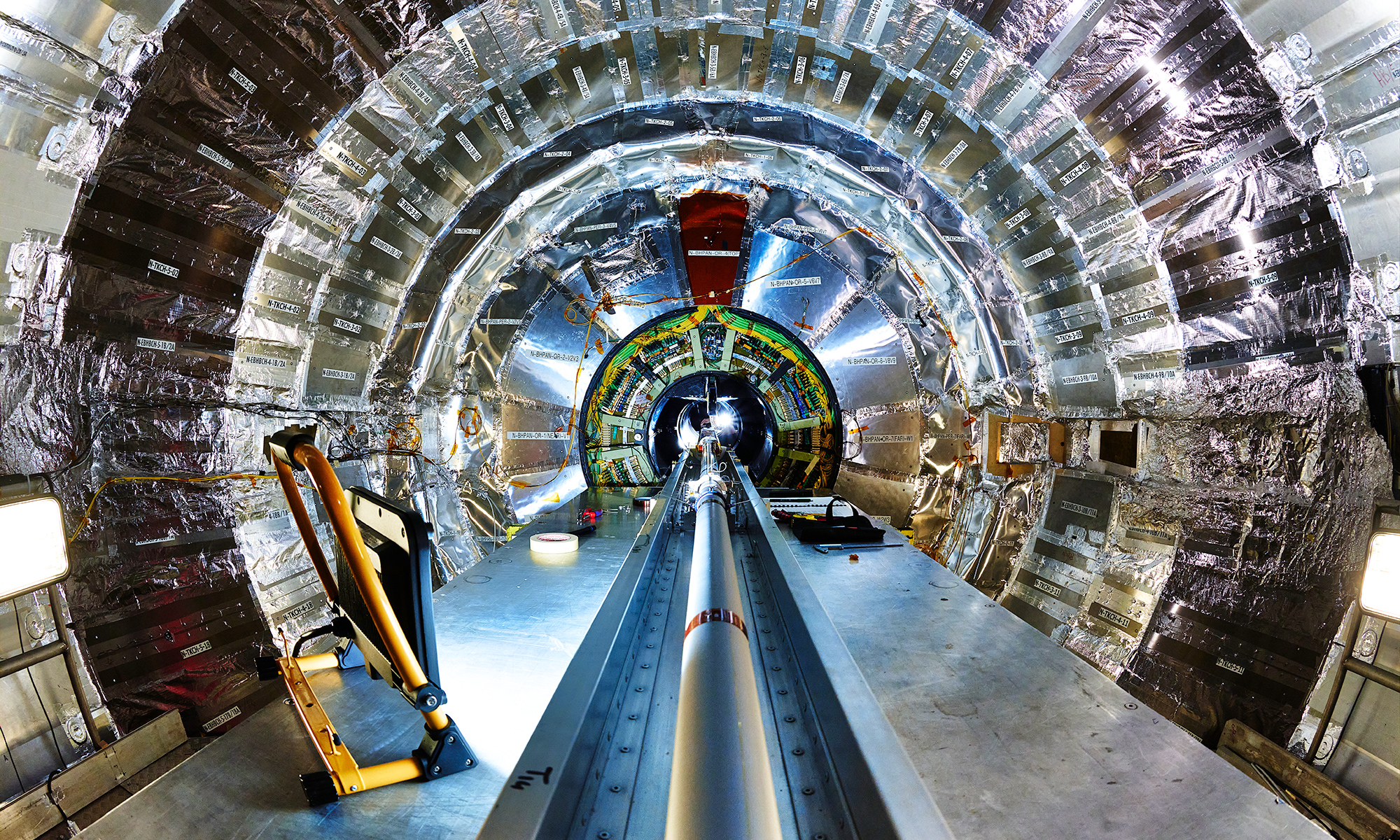Rochester breakthrough in laser science earns Nobel Prize
One of the biggest stories of the year was the selection of Donna Strickland ’89 (PhD) and Gerard Mourou for the Nobel Prize in Physics for their work at the Laboratory of Laser Energetics to devise a better way to apply lasers in research, medicine, and everyday life.
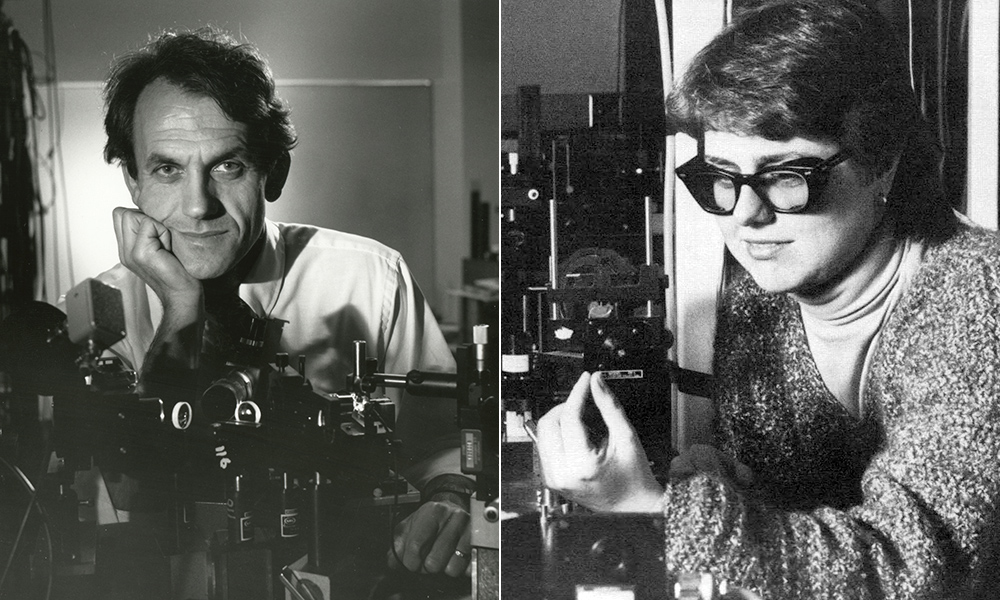
(University of Rochester photos)
In addition to their Nobel noteworthiness, Rochester researchers continue to develop new ways to use lasers in 2018. Because frankly, we’re big on lasers.
Laser bursts generate electricity faster than any other method
Ignacio Franco, assistant professor of chemistry and physics, predicted that laser pulses could generate ultrafast electrical currents. In theory. Now he believes he can explain exactly how and why actual experiments to create these currents have succeeded.
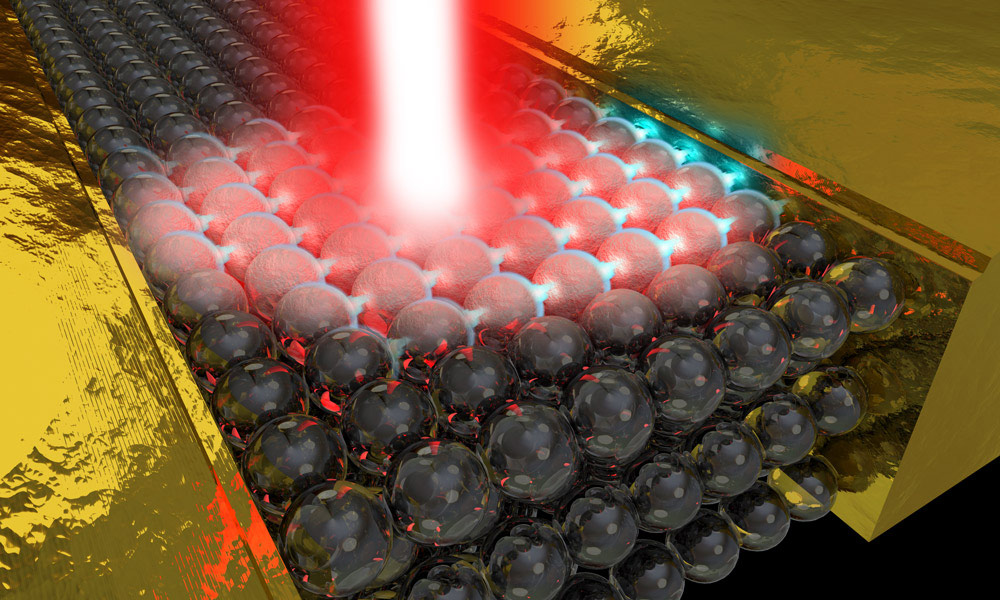
(University of Rochester illustration / Michael Osadciw)
Device creates negative mass — and a novel way to generate lasers
Most objects react in predictable ways when force is applied to them—unless they have “negative mass.” Then they react exactly opposite from what you would expect.
Nick Vamivakas, an associate professor of quantum optics and quantum physics, and other researchers in his lab have succeeded in creating particles with negative mass in an atomically thin semiconductor, by causing it to interact with confined light in an optical microcavity. This alone is “interesting and exciting from a physics perspective,” says Vamivakas. “But it also turns out the device we’ve created presents a way to generate laser light with an incrementally small amount of power.”
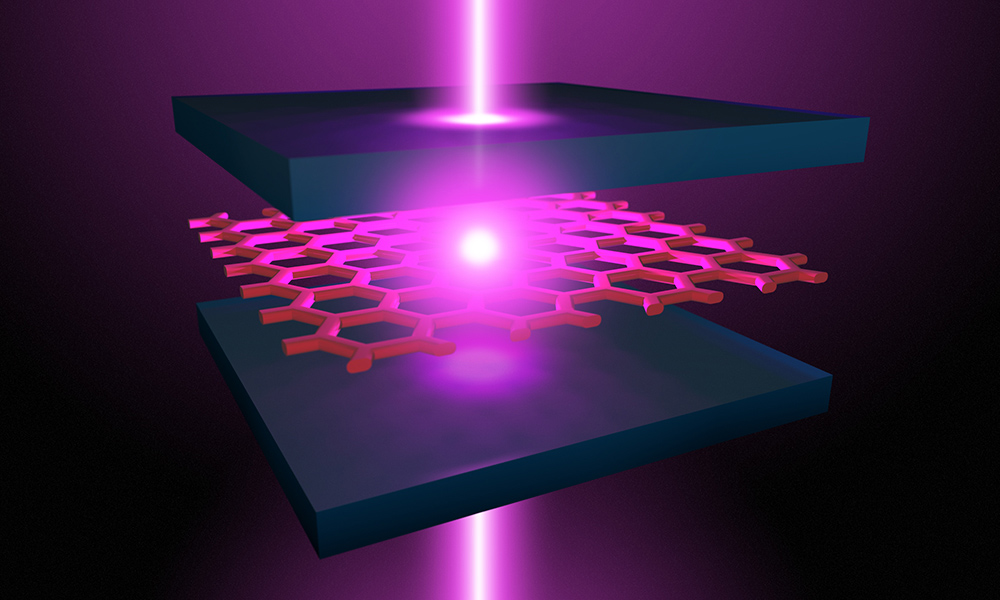
(University of Rochester illustration / Michael Osadciw)
Rochester joins new nationwide high-intensity laser network
Rochester’s Laboratory for Laser Energetics (LLE), the largest university-based laser facility in the world, is partnering with eight other high-intensity laser facilities to form a new national research network called LaserNetUS, which will provide US scientists increased access to high-intensity, ultrafast lasers like the OMEGA EP at the LLE.
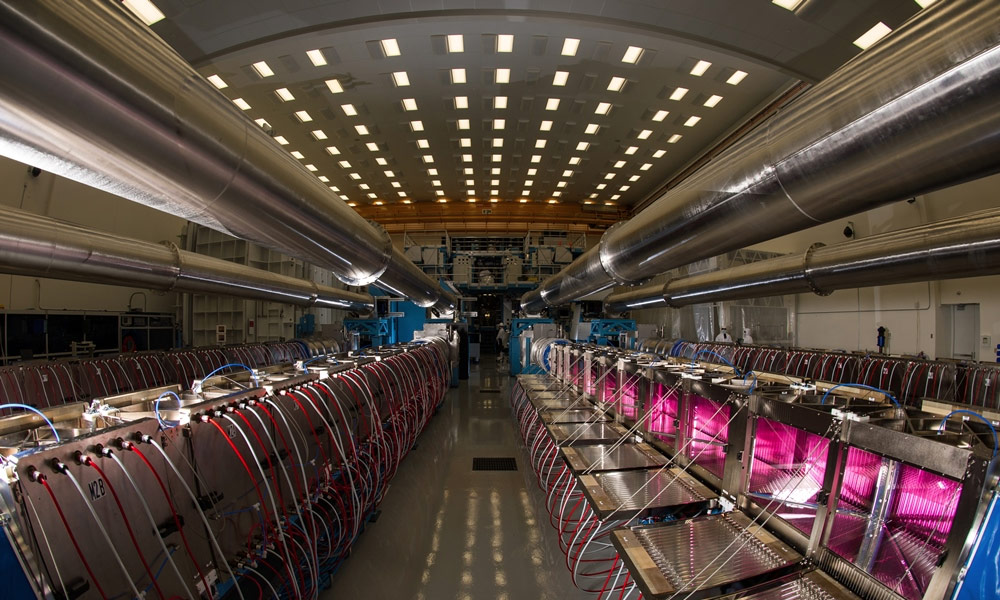
(University of Rochester photo / J. Adam Fenster)
Measuring each point of a beam of light
If you want to get the greatest benefit from a beam of light—whether to detect a distant planet or to remedy an aberration in the human eye—you need to be able to measure it. Now professor of optics Chunlei Guo and a team of Rochester research team have devised a much simpler way to measure beams of light—even powerful, superfast pulsed laser beams that require very complicated devices to characterize their properties.
It’s a “revolutionary step forward,” says Guo, and could render traditional instruments for measuring light beams obsolete.
In the lab where it happened: Nobel science in pictures
Donna Strickland ’89 (PhD) and Gérard Mourou received the 2018 Nobel Prize in Physics for work to develop chirped pulse amplification (CPA), research they undertook in the 1980s at the University of Rochester’s Laboratory for Laser Energetics (LLE). Today, members of the LLE use chirped pulse amplification in their own research to develop the next generation high-power lasers and to better understand the fundamentals of high-energy-density physics.
The future of CPA—and the subject of PhD student Sara Bucht’s current research—involves using plasma instead of the prism-like gratings that Strickland first developed to spread the laser pulse into its wavelengths of color. “It’s another step change in terms of laser power that could lead to a possible Nobel Prize for Sara—potentially the next graduate student project to be recognized by the Nobel committee,” says Dustin Froula, senior scientist and assistant professor of physics. “We’ve taken the technology Donna and Gérard developed to its limits, and we’re now looking at what the next step in physics would be.”
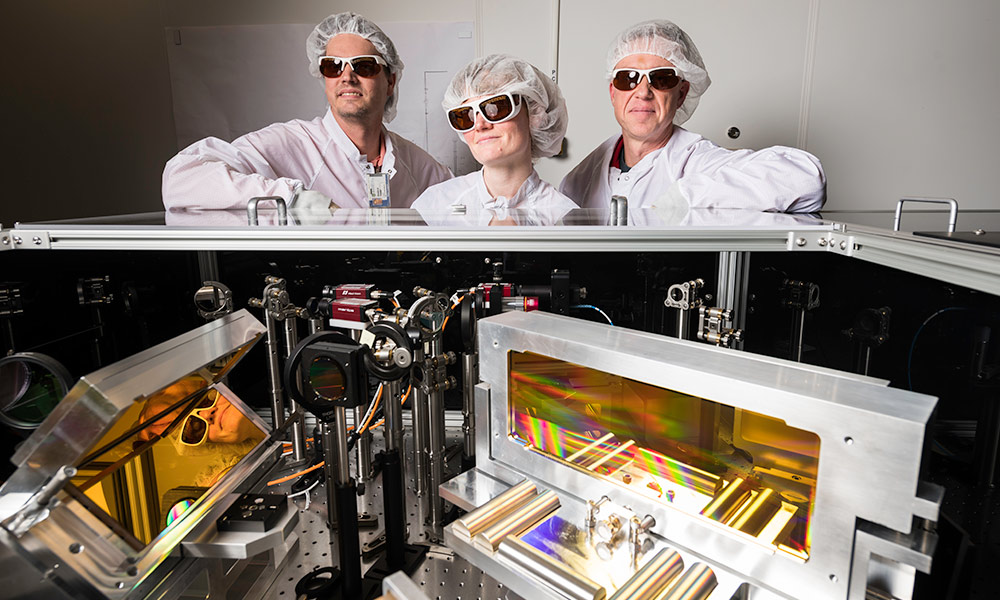
(University of Rochester photo / J. Adam Fenster)
Read more
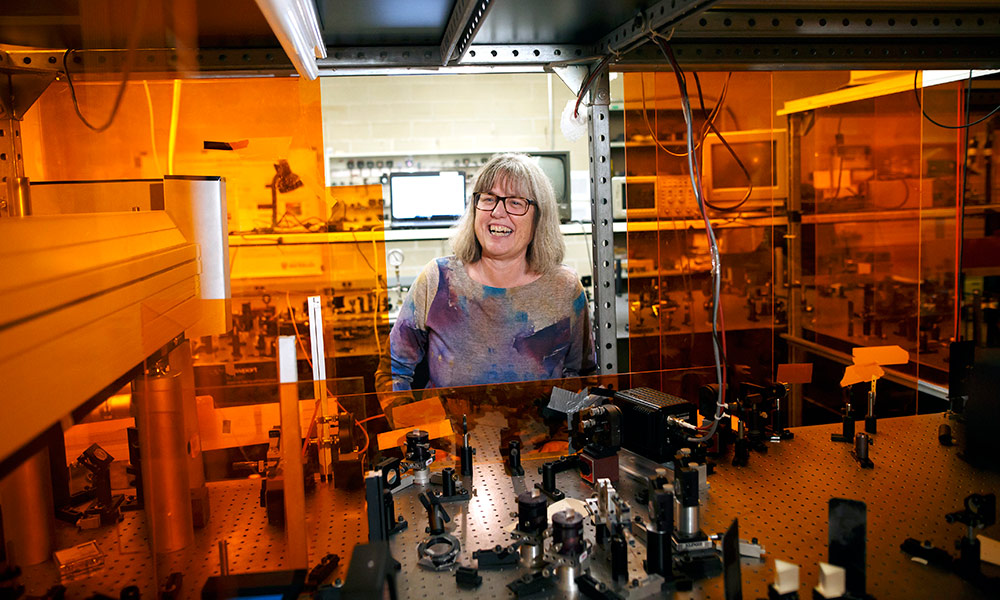
Love at first light
Donna Strickland ’89 (PhD), a self-described “laser jock,” receives the Nobel Prize, along with her advisor, Gérard Mourou, for work they did at the Laboratory for Laser Energetics.

Chirped-pulse amplification: 5 applications for a Nobel invention
Did you know that every time you pick up your smartphone, you are holding in your hand a product made possible by a Nobel Prize-winning technology developed at the University of Rochester?
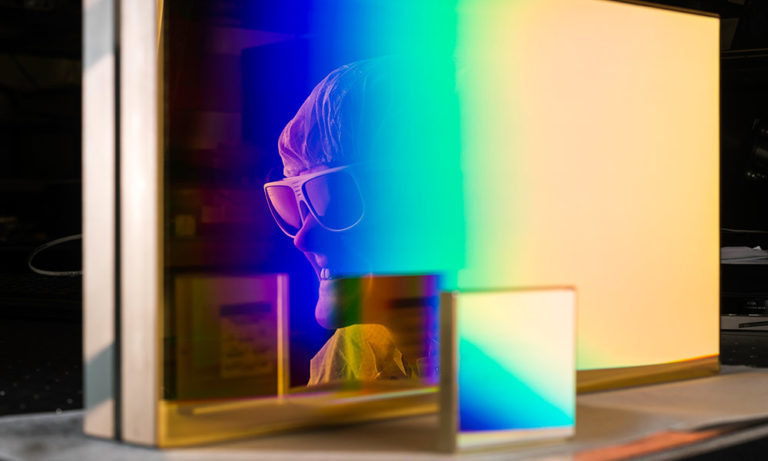
2018: The year in pictures
University photographer, J. Adam Fenster picks some of his favorite photos and gives us a behind-the-scenes look at what makes each special.



